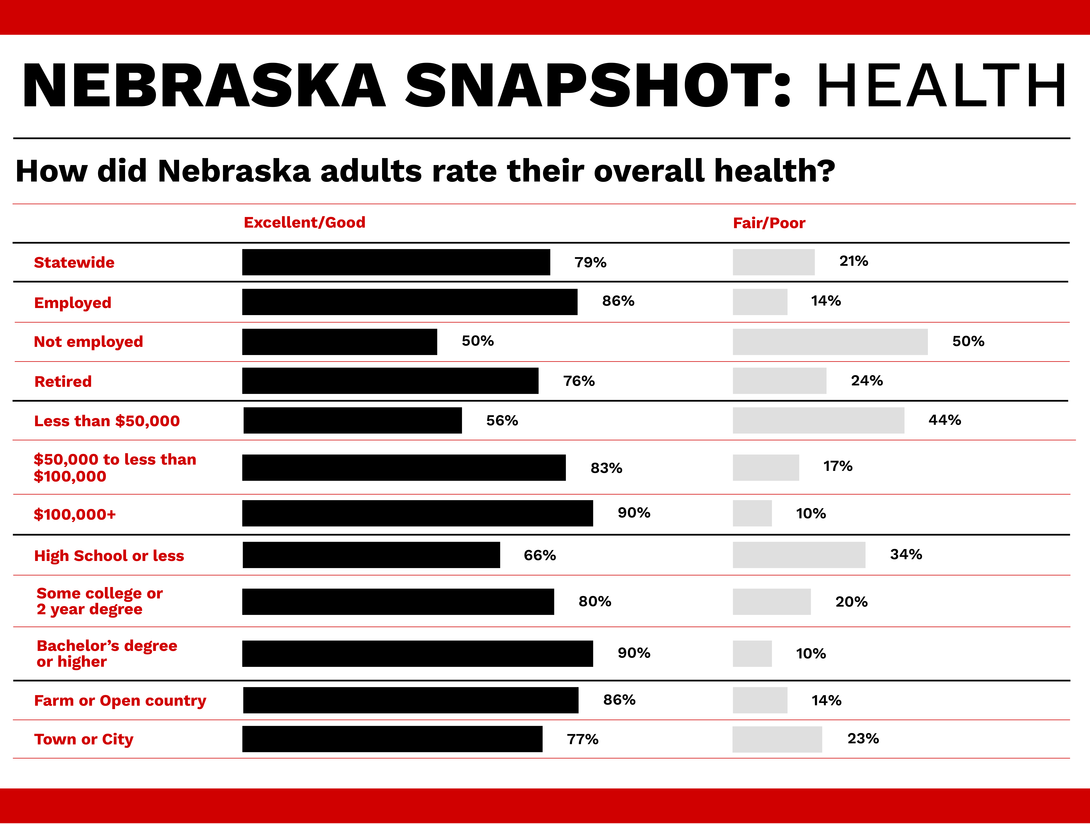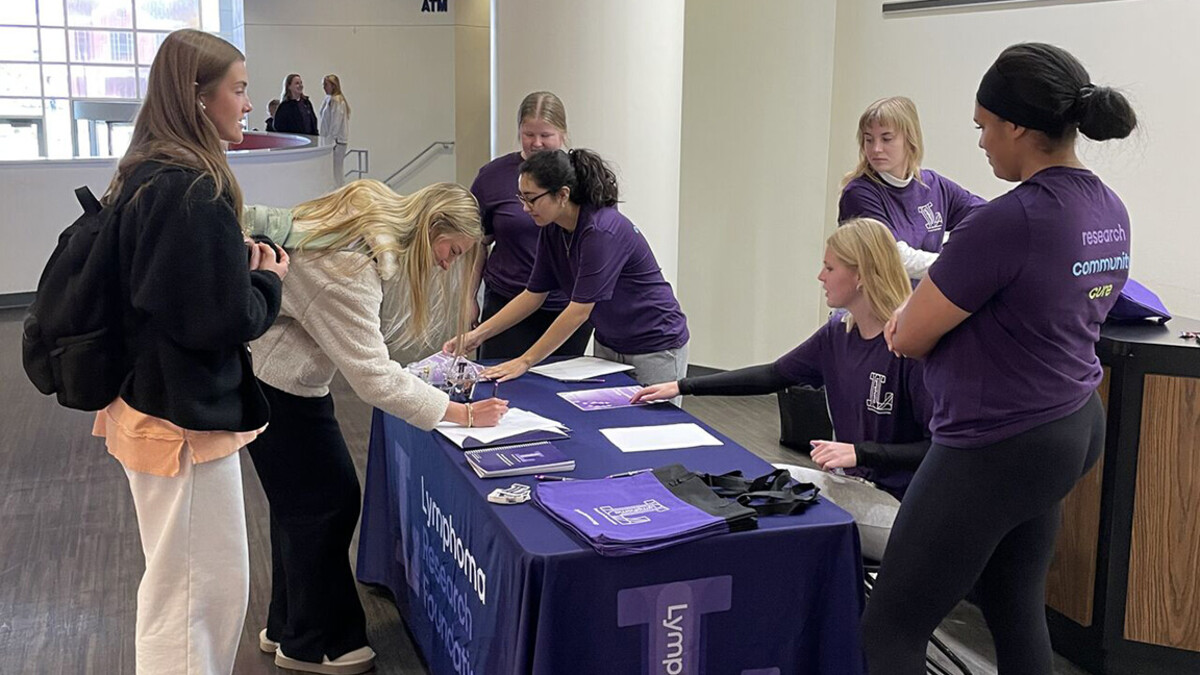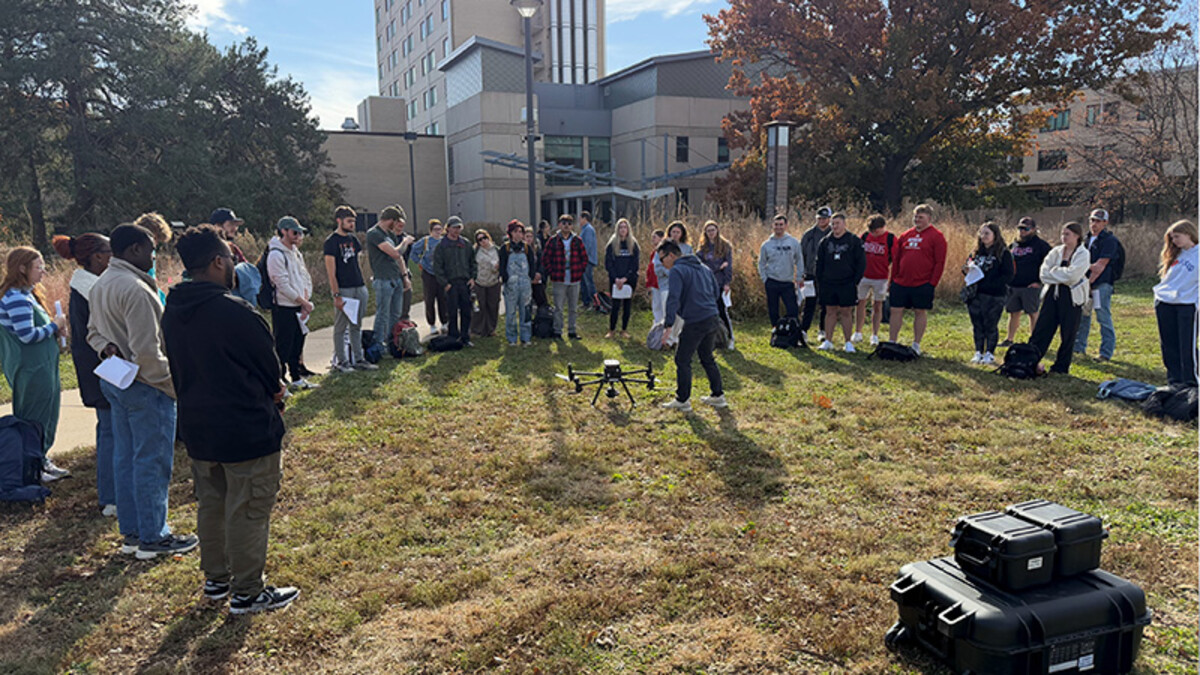
Nearly four in five Nebraska adults feel that their overall health is good, though disparities exist when accounting for employment status, income levels and education.
That is according to the latest Nebraska Snapshot from the University of Nebraska–Lincoln’s Bureau of Sociological Research. The bi-monthly Snapshot is developed from the 2024 Nebraska Annual Social Indicators Survey, which gathered opinions from 2,232 adults.
Statewide, 79% of respondents rated their overall health as excellent or good, contrasted with 21% who said their health was fair or poor. These numbers were similar across age groups and men and women. The widest disparities were found among income levels and employment status.

Ninety percent of those surveyed who make more than $100,000 rated their health as excellent or good, while only 56% of respondents making less than $50,000 said the same. Of those who are employed, 86% rated their health high, compared to only 50% of unemployed Nebraskans.
“Education, employment and income are often linked, and we see that is the case here, as well — those who are unemployed, earn less than $50,000, and have a high school education or less report lower levels of health,” said Amanda Ganshert, co-author of the report and assistant director of research and methods with the Bureau of Sociological Research.
Similar to income levels, 90% of respondents with at least a bachelor’s degree rated their health as good or excellent, but only 66% of those with a high school diploma or less said the same.
Additionally, people of color were less likely to rate their health as excellent or good. Only 67% of these respondents reported excellent or good health, compared to 81% of white residents.
Geography seemed to make a difference, too. Those who live on a farm or in open country were slightly more likely to rate their health as excellent or good, but more rural regions of the state didn’t fare as well. Panhandle residents were the least likely to rate their health as good or excellent, with 30% of these respondents reporting fair or poor health and 70% rating their health as excellent or good.
“Those who live in rural areas are more likely to report higher levels of health; however, this pattern doesn’t hold when breaking Nebraska into regions,” Ganshert said. “The Panhandle, southwest and south-central regions have lower levels of health than the more urban southeast and midland regions.”
The full November 2025 Nebraska Snapshot, as well as previous snapshot reports, are available on the Bureau of Sociological Research website. The bureau has been conducting survey research since 1964 and conducts surveys via mail, web, telephone, in-person and mixed modes.







